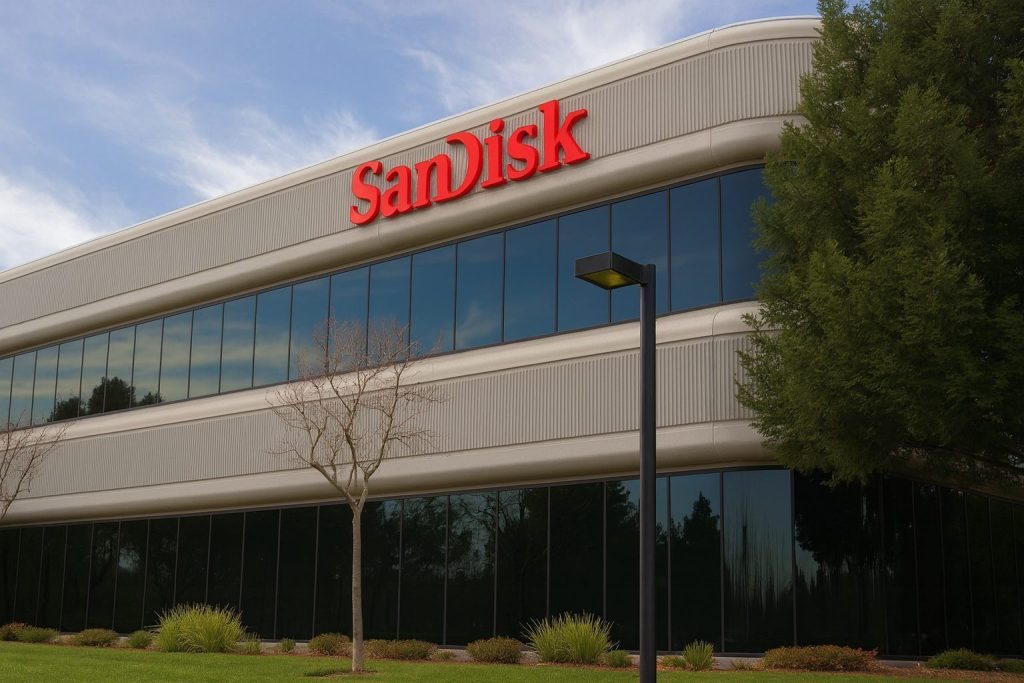Amazon.com, Inc. (NASDAQ: AMZN) heads into Black Friday 2025 with its share price hovering just below recent highs, investors digesting a massive new AI cloud spending plan, and fresh headlines on labor action and regulation. Here’s what traders and long‑term investors should know before markets open for Friday’s shortened session.
1. Where Amazon Stock Stands Going Into Black Friday
U.S. markets are closed today, Thursday, November 27, for Thanksgiving. Trading resumes on Friday, November 28, 2025, with an early close at 1:00 p.m. ET on the NYSE and Nasdaq. [1]
Amazon’s last close (Wednesday, November 26) was $229.16 per share, down 0.22% on the day. [2] That leaves:
- Year‑to‑date performance: roughly +4–5% in 2025, a modest gain compared with major indexes. [3]
- Distance from highs: the all‑time closing high of $254.00 (set on November 3, 2025) and a 52‑week high around $258.60 mean AMZN trades roughly 10–12% below its recent peak. [4]
- Medium‑term underperformance: multiple analyses note that Amazon has lagged both the Nasdaq and its “Magnificent Seven” mega‑cap peers over the last few years, despite the AI boom. [5]
In other words, AMZN goes into Black Friday as a profitable, mega‑cap AI and cloud leader that has not been the market’s favorite momentum play, which is exactly why each new headline can matter more than usual.
Because Friday’s session is shorter and typically features lighter volume, price moves can be exaggerated by any unexpected Amazon‑specific news. [6]
2. Q3 2025 Earnings: AWS Re‑Accelerates, Profits Jump
Amazon’s third‑quarter 2025 results, released on October 30, are still the fundamental backdrop for the stock. Key numbers: [7]
- Net sales: $180.2 billion, up 13% year over year (about 12% excluding FX).
- Segment revenue:
- North America: $106.3 billion (+11% YoY)
- International: $40.9 billion (+14% YoY)
- Amazon Web Services (AWS): $33.0 billion, +20% YoY – its fastest growth in almost three years. [8]
- Net income: about $21.2 billion, or $1.95 per diluted share, up from $1.43 a year ago. [9]
- Operating income: $17.4 billion, including special charges; without those, underlying operating income would have been closer to $21.7 billion. [10]
Coverage from AP, Reuters and others highlighted how AWS’s 20% growth beat expectations, offsetting more moderate e‑commerce growth and helping AMZN shares surge more than 10% in the immediate aftermath of the report. [11]
Management also emphasized:
- A 24% jump in advertising revenue, as on‑site ads and streaming inventory become more important profit drivers. [12]
- Continued efficiency gains in logistics, including faster same‑day and next‑day delivery and expanded grocery coverage in U.S. markets. [13]
For Friday’s session, those Q3 results remain a supportive but not decisive factor; the market has largely digested them, so investors will instead be watching how holiday and AI‑related news interacts with that earnings backdrop.
3. Q4 2025 Guidance: Strong Top Line, Massive Capex
Amazon’s Q4 2025 guidance, covering the current holiday quarter, is another key piece of context: [14]
- Net sales outlook:$206–213 billion, implying 10–13% growth vs. Q4 2024, with a favorable FX tailwind.
- Operating income: projected between $21–26 billion, compared with roughly $21.2 billion in Q4 2024, signaling further margin normalization.
- Analysts’ consensus estimates were sitting near the middle of that revenue range, so guidance was seen as slightly better than expected and initially helped fuel the post‑earnings rally. [15]
However, the optimism is tempered by Amazon’s aggressive capital‑expenditure plans:
- CFO Brian Olsavsky told investors Amazon expects around $125 billion in capex for 2025, above prior expectations, largely to fund AI and cloud infrastructure. [16]
Some analysts worry this could pressure free cash flow if AI monetization lags. Recent commentary has described Q4 guidance as “soft” relative to elevated expectations, given how much the company is spending to chase AI demand. [17]
For traders on Friday, the tension between strong revenue guidance and very heavy investment spending is central to how AMZN will be valued into year‑end.
4. AI and Cloud: The New $50 Billion U.S. Government Bet
Amazon is doubling down on AI and cloud as its primary long‑term growth engine—something that could support the stock or weigh on it depending on risk appetite.
A dedicated AI cloud for U.S. government
Earlier this week, Amazon Web Services announced plans to invest up to $50 billion to build the first commercial cloud infrastructure dedicated to U.S. government AI and supercomputing. [18]
Key points:
- The project, expected to begin construction in 2026, aims to add about 1.3 gigawatts of high‑performance computing capacity across AWS’s GovCloud, Secret and Top Secret regions. [19]
- Federal agencies will gain broader access to services like Amazon SageMaker, Amazon Bedrock, Amazon Nova, and AWS Trainium chips, along with Nvidia‑powered infrastructure, for large‑scale AI workloads. [20]
This move positions AWS as a central AI partner for U.S. government agencies, deepening an already significant public‑sector business.
New AI infrastructure and services
On top of that, AWS blogs tied to re:Invent 2025 have highlighted new capabilities such as:
- EC2 P6‑B300 instances aimed at large‑scale AI applications.
- New Amazon Bedrock tiers to better match AI performance and cost.
- Enhanced observability and billing tools for complex multi‑account cloud setups. [21]
For investors, these announcements underscore why Amazon is willing to spend so heavily on capex. The bull case is that AWS remains a top‑tier AI and cloud provider with long runway; the bear case is that AI spending turns into an overinvestment cycle that compresses returns. Recent valuation commentary explicitly flags the risk of Amazon “over‑building” AI infrastructure if demand doesn’t fully materialize. [22]
5. Labor Flashpoints: Black Friday Strikes and a New York Court Win
Labor dynamics are in the spotlight exactly as Amazon heads into one of its highest‑volume shopping weekends of the year.
Global #MakeAmazonPay actions kick off Friday
From November 28 to December 1, unions and activist groups plan coordinated #MakeAmazonPay strikes and protests across more than 30 countries, targeting warehouses, offices and data centers. [23]
According to UNI Global Union, actions are planned in:
- Major cities like New Delhi, Montreal and Berlin
- Key Amazon logistics markets such as Germany, India, Canada and the U.S.
- A variety of facilities, from fulfillment centers to corporate offices
Organizers say they’re protesting what they describe as labor abuses, environmental impact and threats to democratic rights in how Amazon operates. [24]
While it’s impossible to know ahead of time how disruptive these actions will be, any reports of fulfillment delays, strikes at high‑volume sites, or viral footage from protests could influence sentiment around AMZN during Friday’s session.
New York labor law blocked—Amazon wins an injunction
At the same time, Amazon just scored a notable legal win in New York. On November 26, a federal judge granted the company a preliminary injunction blocking enforcement of a new state labor law that would have allowed New York’s Public Employment Relations Board to oversee certain private‑sector labor disputes while the U.S. National Labor Relations Board (NLRB) remains backlogged. [25]
Amazon argued that the state law improperly intruded on federal jurisdiction over labor relations. The judge agreed, citing Supreme Court precedent and warning of potential conflicting decisions between state and federal regulators. The case stemmed from a dispute over the firing of a union leader at the Staten Island warehouse. [26]
Together, the global strike campaign and this court victory underscore how labor and worker‑rights issues remain a major non‑financial risk factor for Amazon that traders may factor into their positioning.
6. Regulatory and Antitrust Pressure: EU Cloud Probe and FTC Scrutiny
Beyond labor, Amazon is still under regulatory and antitrust scrutiny on several fronts:
- EU Digital Markets Act (DMA) cloud probe: The European Commission recently launched three investigations into cloud computing services provided by Amazon and Microsoft, focusing on potential anti‑competitive practices like difficult switching and unfair contractual terms. [27]
- Marketplace antitrust litigation in the U.S.: Consolidated cases such as De Coster et al. v. Amazon form one of the largest digital‑marketplace antitrust proceedings in U.S. courts, challenging how Amazon structures its platform and fees. [28]
- FTC Prime settlement: Amazon agreed in October to pay about $2.5 billion to resolve U.S. Federal Trade Commission allegations that it enrolled consumers into Prime without proper consent and made cancellation too difficult—funds that include both penalties and customer refunds. [29]
- Ongoing FTC trial over Prime practices: Apart from the settlement, Amazon is also facing a separate FTC trial over aspects of its Prime membership design and business practices. [30]
These matters aren’t likely to move the stock tick‑by‑tick on Black Friday, but they contribute to the valuation discount and risk premium that some investors apply to AMZN versus other mega‑caps.
7. Holiday Shopping Backdrop: Demand Is Strong, but Consumers Are Cautious
Black Friday and Cyber Monday remain crucial for Amazon’s retail and advertising businesses, yet the shopping environment in 2025 looks more nuanced than in boom years:
- Retail and industry data suggest the holiday shopping season keeps starting earlier and is increasingly spread across October and November, especially via online promotions and deal‑events. [31]
- Reports on Amazon’s October Prime Big Deal Days indicated more cautious consumer behavior, with shoppers favoring essentials and smaller baskets—potentially a signal for how holiday spending will unfold. [32]
- Reuters coverage of Amazon’s Q3 results flagged slowing e‑commerce growth and weaker consumer confidence as ongoing headwinds, even as cloud and ads remain strong. [33]
At the same time, the National Retail Federation and other forecasters expect Black Friday (November 28) to be one of the busiest shopping days of the year, which typically benefits Amazon’s marketplace and advertising inventory. [34]
For AMZN, any early data points about website performance, shipping times, or changes in promotional intensity over the weekend could feed into expectations about whether the company will hit or miss its Q4 revenue range.
8. Analyst Sentiment, Valuation Debates and Institutional Flows
Wall Street views: bullish long term, cautious on valuation
Most Wall Street firms maintain broadly positive long‑term views on Amazon, citing a combination of e‑commerce scale, AWS, advertising, and future businesses like satellite broadband and quantum computing. [35]
Recent datapoints:
- Rosenblatt Securities reiterated a “Buy” rating with a $305 price target earlier in November. [36]
- Chinese investment bank CICC reportedly raised its Amazon price target to $280, maintaining an “Outperform” rating. [37]
- Nasdaq data show the consensus EPS forecast for fiscal 2025 has ticked higher in recent weeks, reflecting analysts’ expectation of continued earnings growth as AWS and advertising scale. [38]
At the same time, some fundamental investors are urging caution:
- A Seeking Alpha analysis published today argues that Amazon’s valuation is “hard to justify” at current levels, calling the stock a Hold because it trades close to estimated intrinsic value and offers limited margin of safety amid heavy AI capex and fragile consumer spending trends. [39]
- Another recent note upgraded the stock but still warned that Q4 guidance looks soft relative to expectations and that AWS, while rebounding, faces intense competition from Azure and Google Cloud. [40]
Institutional flows and insider activity
A stream of 13F and institutional‑holding updates in the last few days shows:
- New or increased positions in Amazon by firms such as Syverson Strege & Co, Summit Investment Advisory Services, Hutchinson Financial Advisors, and various wealth managers, often citing confidence in long‑term fundamentals. [41]
- Some trimming of positions by others, such as Great Lakes Retirement Inc., which still counts Amazon among its largest holdings. [42]
- An insider sale last week by Amazon’s CEO, who disposed of a modest number of shares—small compared with his overall stake but still watched by traders tracking insider sentiment. [43]
Overall, institutional positioning looks broadly constructive but not euphoric, consistent with a stock that many treat as a long‑term compounder rather than a short‑term trade.
9. Key Things to Watch for Amazon Stock on Black Friday 2025
With all of this in mind, here are the main catalysts and risks to monitor before and during Friday’s shortened session:
- Black Friday operations and demand
- Any early reports about website uptime, delivery delays, or warehouse disruptions.
- Commentary from retailers or data providers on Amazon’s share of online spending versus other platforms.
- Impact of #MakeAmazonPay strikes
- News of major strikes or protests at big facilities could revive concerns about labor relations, especially if they cause shipping bottlenecks.
- Conversely, limited disruption may reassure investors that holiday operations are resilient. [44]
- Reactions to the $50 billion AI cloud plan
- Any fresh analyst notes or media coverage questioning or endorsing the scale of AWS’s government‑cloud investment and broader AI spend. [45]
- Regulatory headlines
- Developments in the EU cloud DMA probe or new U.S. antitrust/FTC commentary could weigh on sentiment, even if the financial impact is long‑dated. [46]
- Marketwide risk appetite
- With Black Friday trading hours shortened and volume likely lower than usual, broader tech or AI‑sector swings can feed into outsized intraday moves in AMZN. [47]
10. Bottom Line
Heading into the November 28, 2025 Black Friday session, Amazon stock sits at an interesting crossroads:
- Fundamentals are strong, with double‑digit revenue growth and a resurgent AWS business powering record profits. [48]
- The company is making huge long‑term AI bets, including a landmark U.S. government cloud project that could cement AWS’s strategic importance—but also locks in massive capex. [49]
- At the same time, labor disputes, regulatory pressure and valuation concerns continue to exert downward pressure on sentiment, helping explain why AMZN has lagged some peers despite the AI boom. [50]
For traders and investors watching AMZN on Friday, the focus will be on whether Black Friday and Cyber‑week headlines reinforce the bullish narrative of an AI‑powered, cash‑generating platform—or the bear narrative of an expensive giant facing rising costs, legal risks and a cautious consumer.
This article is for informational purposes only and does not constitute financial, investment or legal advice. Always do your own research or consult a licensed professional before making investment decisions.
References
1. www.kiplinger.com, 2. www.nasdaq.com, 3. portfolioslab.com, 4. www.macrotrends.net, 5. finance.yahoo.com, 6. m.economictimes.com, 7. ir.aboutamazon.com, 8. s2.q4cdn.com, 9. ir.aboutamazon.com, 10. www.alpha-sense.com, 11. www.reuters.com, 12. apnews.com, 13. www.axios.com, 14. www.tipranks.com, 15. www.tipranks.com, 16. www.reuters.com, 17. seekingalpha.com, 18. www.reuters.com, 19. www.reuters.com, 20. www.aboutamazon.com, 21. aws.amazon.com, 22. seekingalpha.com, 23. uniglobalunion.org, 24. uniglobalunion.org, 25. www.reuters.com, 26. www.reuters.com, 27. www.reuters.com, 28. www.forensisgroup.com, 29. natlawreview.com, 30. coincentral.com, 31. advertising.amazon.com, 32. www.forbes.com, 33. www.reuters.com, 34. www.axios.com, 35. www.nasdaq.com, 36. www.gurufocus.com, 37. www.perplexity.ai, 38. www.nasdaq.com, 39. seekingalpha.com, 40. seekingalpha.com, 41. www.marketbeat.com, 42. www.marketbeat.com, 43. www.insidertrades.com, 44. uniglobalunion.org, 45. www.reuters.com, 46. www.reuters.com, 47. m.economictimes.com, 48. ir.aboutamazon.com, 49. www.reuters.com, 50. www.reuters.com









